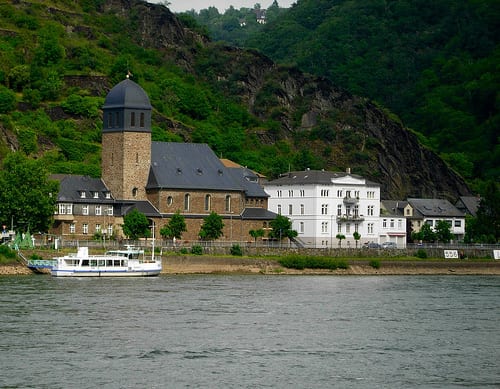
The Rhine traced over many centuries the border. First, the Roman Empire, then between Germany and France. The Roman influence can be seen and heard in each of these cities of western Germany. The many historic buildings and churches, as well as the influential Roman dialect, not only a bridge to the past, but also to the Mediterranean lifestyle.
That Germany has such a large number of major cities is due to the vicissitudes of its history. The difference found in the Rhineland cities is that here we have easy access to everyday life and the human, cities are unmistakable character forged by history. When we travel from one of these nuclei to discover a new world, not only by the various monuments and art treasures but also by the different lifestyle.
The Rhine, or the Great Way, is a father in the Rhineland, its vital. The chains of hills along the river are old land. Millions of years have isolated volcanic rocks and, even today, remain isolated. The heights of large areas provide a feeling of vastness and rugged elevations that are not unduly limiting the view from the valleys.
From the time of the Celts and the Romans, the settlers were attracted to this powerful element, water, drove the Romans from Nettersheim to the city of Cologne. And so happened that this harsh region, despite its shortcomings, was attracting wealthy and powerful who left castles and cities which are real gems, in line with the natural beauty of forests and rivers, its romantic facade supported hopes for welfare economic in these districts.
Cities:
Rhine gave fertility to their fields and enriching their cities. The origin of the cities of North Rhine goes back to Roman civilizations grew and frank on both sides of the river forming a cityscape of unparalleled concentration throughout Europe.

Examples are the big rivals: Cologne and Düsseldorf, competing for centuries, but simultaneously fertilized each other. From the time of the Romans Cologne has always been spiritual melting trends and many peoples. His entrepreneurial spirit that did not lose the values of mind and feelings documented by the affectionate care of cultural heritage inherited from Calvary to the wide neighborhood parks and the picturesque gardens on the outskirts of the city. For its part, the urban area characterized by the modern symbols of economic power: witness of concrete and steel.
Düsseldorf is on a par. Since its residential time, the capital of the Land is not only used to accommodate the court and government, but also long focused financial strength. In addition to palaces and mansions distinguished bourgeois, central business rising skyward determine the side of the city. The cosmopolitan spirit granted right of residence to people coming from all over the world, here is located the largest Japanese colony of Germany. People meet walking through the mall’s elegant Königsallee is taking a refreshing drink in the ‘world’s longest bar’, the old kernel, and has extensive tours on the Rhine
Bonn has a short career in the federal capital. It’s adorned with ancient Roman castle in Bavaria and the Wittelsbacher become baroque city has offered his home to the powerful of the Republic. Further west, Aachen still keeps its tradition of imperial city to give each year, for example, the Charlemagne Prize in recognition of merit in Europe. So that the festivities did not overflow, as a counterweight, the decoration was created by merit «against the bestial seriously.» In addition, the border city spa is booming place, research center and, ultimately, to challenge the appointment in the international casino luck.

Mönchengladbach, a city born from the Benedictine abbey, textile city is still providing its citizens and to identify potential witnesses guarding the palaces of the past Rheydt and Wickrath and the contemporary era through one of the most modern and attractive regional museums located on the hill Abteiberg.
Duisburg, Essen Mülheim and industrial history have written. Duisburg is the largest river port in Europe. In its museum dedicated to the German inland waterway, visitors can learn more about the history of this region and see what is already practiced by those coal transportation routes from the Middle Ages.
Headquarters of the most famous dynasty of the basin was the city of Essen. But the dominant role of Krupp is the only witness today Hügel mansion, where the public can visit interesting and changing exhibitions. Grugapark the park and the lake Baldeney also offer residents and tourists quality of life in the form of green space.
In the center of Westphalia, Münster is a city of Germany that, despite its openness, the better the image has kept medieval city. The buildings have been built according to traditional models, while the magnificent isolated houses and old churches. Münster remains episcopal see and university, with a typical culture of student pubs.
But not only big cities determine the character of the region played the same role as many other small and medium-sized cities in the Rhineland. It’s worth going on journey of discovery for all of them, without losing an iota of the history and beauty that are in it.
Leave a Reply
You must be logged in to post a comment.
Recent Comments